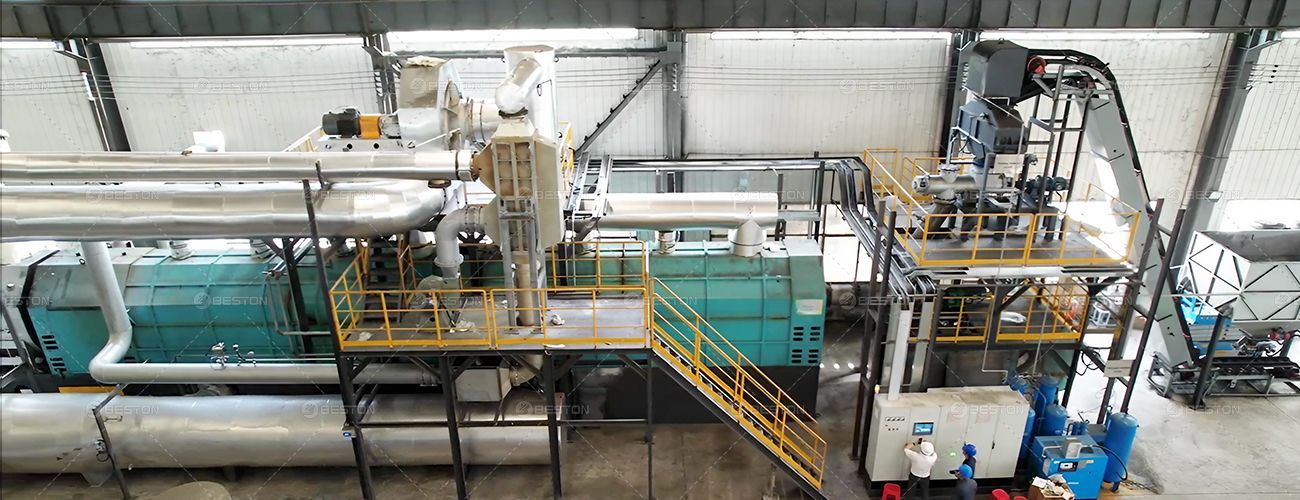Strategic Role of Thermal Desorption Unit in the Petrochemical Sector
The petrochemical industry faces intensifying scrutiny over its environmental footprint and operational efficiency. Among the technologies reshaping waste and residue management, the Thermal Desorption Unit (TDU) has emerged as a cornerstone solution. By applying controlled heat to contaminated substrates, TDU systems volatilize hydrocarbons and separate them from inert solids, enabling both material recovery and safe disposal.
Process Fundamentals
At its core, a thermal desorption unit leverages indirect heating to elevate the temperature of oil-contaminated solids without combustion. As hydrocarbons reach volatilization thresholds, they are desorbed and conveyed into a vapor stream. This vapor is subsequently condensed into liquid hydrocarbons, while residual solids—largely inert—are left behind for further treatment or reuse.
The method is particularly valuable in handling complex petrochemical residues such as tank bottoms, refinery sludge, and catalyst fines. Unlike chemical neutralization or direct incineration, thermal desorption preserves resource value while minimizing secondary pollutants.

Environmental Significance
The petrochemical sector generates a wide array of hydrocarbon-rich waste streams. Without adequate treatment, these residues pose substantial risks to soil, water, and air quality. A TDU directly mitigates these risks by ensuring hydrocarbons are captured and redirected into productive channels rather than discharged into the environment.
Air quality compliance is also enhanced. Modern TDU configurations integrate gas treatment modules such as afterburners and scrubbers, reducing volatile organic compounds and particulate emissions. This strengthens adherence to stringent regulatory frameworks governing refinery and chemical complexes worldwide.
Resource Recovery Potential
Beyond remediation, the integration of a TDU offers measurable economic advantages. The desorbed hydrocarbons condensed into liquid form can be reintroduced into refinery feedstock streams or marketed as alternative fuel oil. For many operators, this transforms waste liabilities into revenue-generating streams.
In addition, the treated solids often meet thresholds for safe reuse in construction materials, landfill cover, or other industrial applications. The dual benefit of hydrocarbon recovery and solid residue valorization makes the TDU a key contributor to circular economy principles within the petrochemical industry.
Operational Flexibility
A TDU is designed with adaptability in mind. Feedstock variability—whether in terms of viscosity, hydrocarbon concentration, or moisture content—can be accommodated by adjusting residence time and temperature parameters. This flexibility allows petrochemical operators to process diverse waste profiles within a single unit, streamlining their environmental management infrastructure.
Furthermore, the modular architecture of many TDU systems simplifies integration into existing petrochemical complexes. Units can be scaled for batch or continuous operations, aligning with both small-scale specialty refineries and large-scale integrated plants.
Safety and Risk Management
The petrochemical industry operates under high safety expectations. Handling hydrocarbon-contaminated waste presents inherent hazards, including fire risk and toxic exposure. A TDU mitigates these concerns by employing indirect heating, thereby eliminating open flames in direct contact with the material. Automated monitoring systems ensure that pressure, temperature, and vapor flow remain within safe operating envelopes.
By reducing uncontrolled hydrocarbon releases, TDU systems also lower the risk of environmental liabilities. This is especially critical in jurisdictions where penalties for spills and contamination are increasingly severe.
Strategic Industry Implications
The growing emphasis on sustainability and compliance is reshaping investment priorities across petrochemicals. Adoption of TDU technology enables companies to align with environmental, social, and governance (ESG) targets while simultaneously reducing operational costs. The ability to extract hydrocarbons from sludge and residues not only strengthens resource efficiency but also buffers operators against volatile raw material markets.
For petrochemical producers navigating the intersection of profitability and responsibility, TDU systems provide a pathway to reconciling both objectives. They represent not merely a waste treatment tool, but a strategic enabler of sustainable competitiveness in an industry under transformation.



